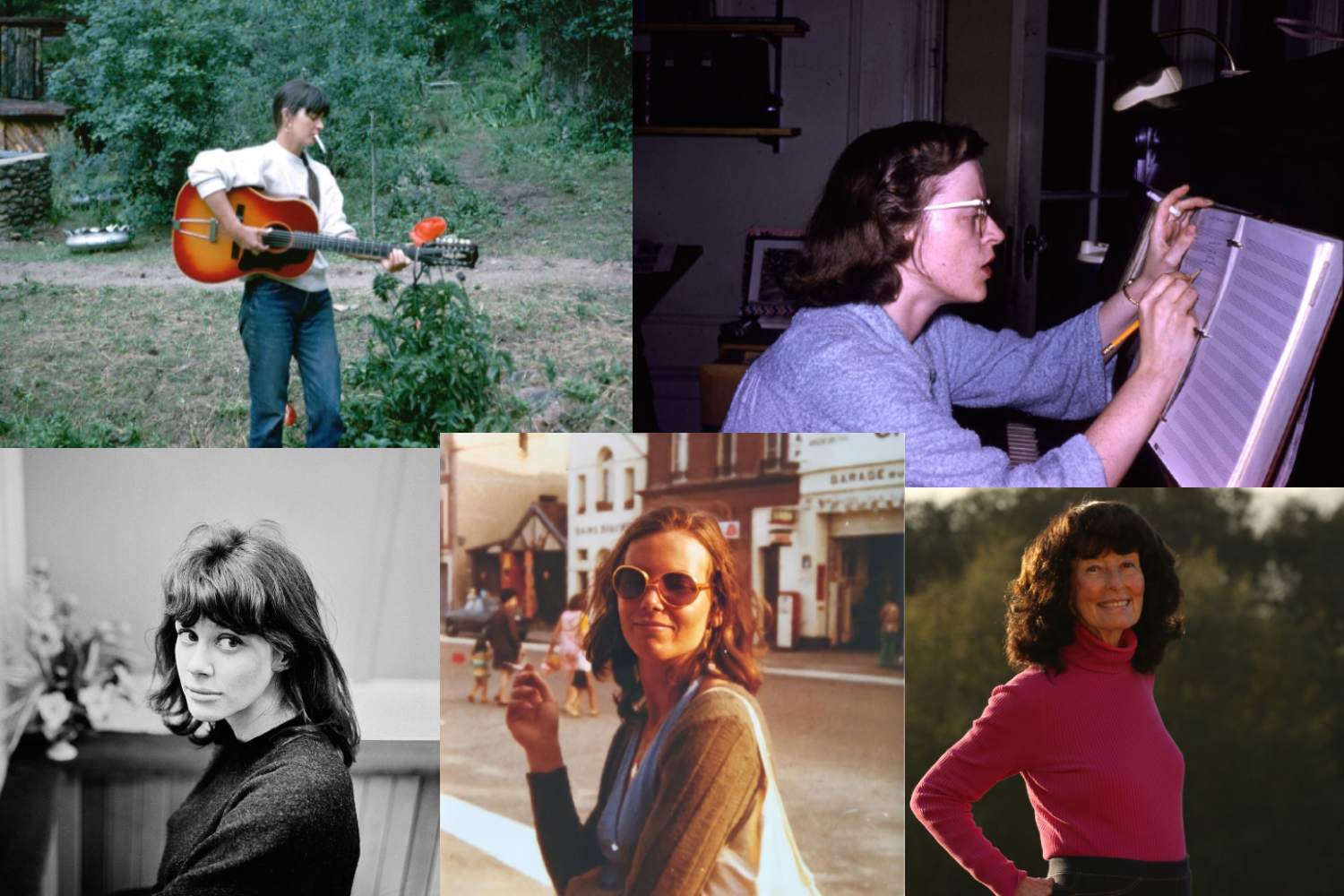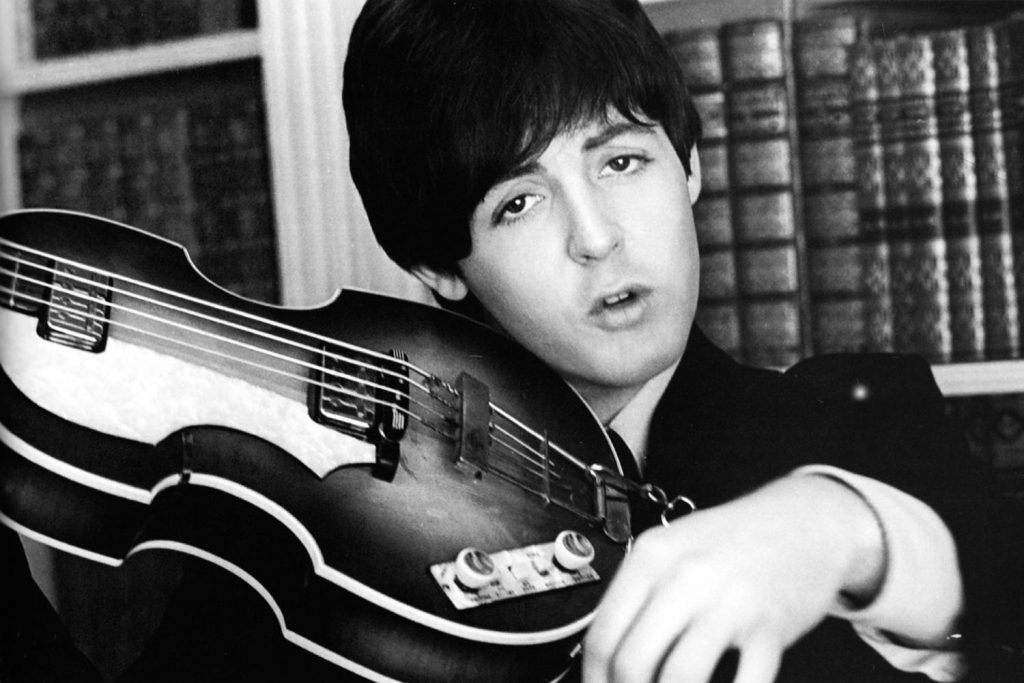Celebrating International Women's Day with these wonderful singer-songwriters who were held back by attitudes of the time, receiving their just recognition decades after the fact
People create art through the lens of whoever they are at the time, but it’s still just a cloud of expression floating around with a life of its own. Everyone will interpret it differently. Once in a while you’ll listen to a song that reaches deep into you and wrenches out your heart in the most random of times and places. That can be decades after the artist is gone.
We give labels of significance to everything to understand it, it’s a natural trait of us bumbling, babbling apes. However, art is one of the few things we know of that is an expression significant only of itself. Why else would it affect you so strongly across vast divides of time, geography, language, and situations? That’s why art feels a little magic. That’s why music will stop you dead in your tracks sometimes.
Read all the latest features, columns and more here.
Despite this, our interpretation of art can be influenced by the creator’s age, sex, gender, skin colour, and class. Once you know more about the artist, this can influence how you view the art in a big or small way. That can be used as an incredibly powerful tool, because an artist’s identity can be used to communicate their message more quickly, more widespread, and in a more profound way.
But what if we turn back the clock a few decades?
In a society that was still rife with conservatism and gender inequality, the reception of music was more prejudiced when people considered the artist identity. Over the last couple of decades the music industry has undergone some massive shifts in attitudes regarding equality and representation of women in music. It’s a continuous journey, but some leaps and bounds have been made.
There’s been a monumental rise of digital globalism, diversity, and individualism represented in art. As a result, music lovers and society in general has been able to start acknowledging some of the struggles women artists previously faced because of prejudice. Some were taken advantage of, some fell between the cracks and lacked recognition for their hard work and talent. This recognition has helped to uncover some hidden treasures, some superb music that went undiscovered for too long.
For International Women’s Day 2022 we thought it would be cool to talk about a few artists that created and released some incredible stuff a few decades ago, but upon their release didn’t receive the acclaim that they now have.
This is a celebration of their art, as well as their overcoming of struggles as women artists that experienced prejudice. But in all honesty, we’ll take any excuse to talk about these legendary musicians in more detail.
Karen Dalton
Karen Dalton is one of those no-filter artists that expresses herself straight from the deep dark depths of her heart. Though her performances spanned over three decades, she released only two studio albums before dying of an AIDS-related illness in 1993. From a blues and folk background, her music was influenced by her late ’60s folk revivalist contemporaries in Greenwich Village. While her music initially didn’t receive much acclaim, it has since garnered a wide, admiring audience that includes artists such as Nick Cave, Angel Olsen, Joanna Newsom, and Courtney Barnett. This is because you cannot unhear her gorgeous haunting voice once you’ve heard it. Soulful and lilting, it has this blues folk clarity with sharp flinty edges, crackling at the end of phrases like a warm fire.
Her more well-known sophomore album In My Own Time (1971) was recorded over a six month period in Bearsville, Woodstock. Produced by her bassist and long-time collaborator Harvey Brooks, it was released under Michael Lang’s label, Just Sunshine. The album opens with the heart achingly beautiful ‘Something On Your Mind’ written by Dino Valenti specifically for Karen to sing, then moves through a diverse track listing that includes ‘When A Man Loves A Woman’ (Calvin Lewis, Andrew Wright), English folk ballad ‘Katie Cruel’ (trad, arr. Dalton), and ‘In A Station’ (Richard Manuel). Entirely its own sound, the album effortlessly fuses the unlikely characteristics of folk, blues, rock, soul, and jazz.
To promote the release of In My Own Time, Lang’s label set Karen up to support a Santana tour, which were all powerhouse arena shows. Karen was uncomfortable playing to Santana’s crowd, due to her personal aversion to show biz and her inward-leaning artistic expression. The flopping of those performances marked the beginning of a long history of struggles with mental health and substance abuse.
To put it bluntly, the world was not ready for Karen Dalton. She was unsupported in her personal life which meant her professional one suffered the consequences. The Oklahoman-raised artist was a married mother at 16, but the conventional life of a housewife stifled her. She left her first husband and moved to New York at 21 to pursue music. The cultural climate at the time did not support young single mothers, let alone those who were trying to make a sustainable living as a musician. However, when In My Own Time was reissued on compact disc by Light in the Attic on Paramount in 2006, Dalton’s obscure legacy has come out of the woodworks and has since had millions upon millions of digital streams.
While she had a difficult and unconventional life, Karen’s history of personal hardship intersected with her artistry, making it poignant, raw, and eccentric. Although this may have also contributed to its lack of commercial success, she is now heralded as a timeless rough diamond.
Vashti Bunyan
Coined as the mother of ‘freak folk’ by a wide cult following, Vashti Bunyan is a singer-songwriter of psychedelic new-folk music. Her debut album Just Another Diamond Day was released in 1970, but it fell under the radar when it didn’t find an audience. Following its re-release on CD in 2000, Vashti now has an ever-growing mass of admirers that includes artists like Joanna Newsom, Animal Collective, and Devendra Banhart. An original vinyl pressing of Just Another Diamond Day has now apparently fetched for over three thousand USD for its rarity among Brit-folk music collectors. This is not only because her music is beautiful – there is a power to its soft-spoken poetic charm.
Vashti grew up in London, starting her musical journey in early adulthood during the love revolution of the late ’60s. At 18 she travelled to New York City, and upon soaking up the vibrant music scene she began to find her own footing in songwriting. She returned to the UK and dedicated herself to the London scene, hitting up gigs and playing clubs. Her music soon caught the attention of Andrew Loog Oldham, the Rolling Stones’ Manager. Working with Oldham, Vashti released her first single ‘Some Things Just Stick In Your Mind’ in 1965, under the singular name ‘Vashti’. The song was written by Keith Richards and Mick Jagger and was more straight down the middle compared Vashti’s own hypnotic writing style, receiving far more attention than her own original B-side track ‘I Want To Be Alone’. Her follow up single ‘Train Song’ in 1966, produced by Peter Snell, didn’t garner any traction.
After a few years of minimal shows, Vashti hit the road with her then-boyfriend to Scotland via horse and cart. She was headed for an artist commune by invitation of fellow singer-songwriter Donovan. What ensued was a two year trip on which she penned the songs that would end up on her debut album. In 1969 she returned to London and recorded this new collection of songs with Joe Boyd (Fairport Convention, Nico, Nick Drake). The entire album was recorded during a three-day period, hastily brought to life by folk luminaries Dave Swarbrick and Simon Nicol of Fairport Convention, Robert Kirby, John James, and Robin Williamson of the Incredible String Band. When the album flopped upon release, Vashti grew frustrated with trying to break into the music industry with her eclectic style. Over the following three decades she decided to make art in obscurity and raise a family.
In Just Another Diamond Day, the fragility of Vashti’s vocals have a compelling presence. They’re measured and whispery alongside rich string parts and picked guitars. The production is reminiscent of Nick Drake’s early stuff, which makes sense as Joe Boyd worked on both, but her writing has both a natural and otherworldly tone. There’s a humble beauty to it that instantly grabs you upon the first listen, though it’s clear some complex thought went into it. Her subsequent albums have further developed and explored that feeling, in her more recent releases Lookaftering (2005) and Heartleap (2014).
Vashti remained elusive for so long, so the way her music gets under your skin so quickly is real artistry. Her music invites you, yet exists outside of any box. This speaks volumes of Vashti Bunyan as an unassuming powerhouse of a singer-songwriter, and a timeless phenomenon that will only keep growing in popularity.
Connie Converse
Another incredibly singular lyricist that fell into obscurity was ‘Connie’ Converse, who was a singer-songwriter far ahead of the times. She did not release any music in the span of her career, but she’s slowly starting to be known as one of the first contemporary singer-songwriters. This is because of some sweet, haunting collections of songs, How Sad, How Lovely (2009), and Sad Lady (2020), released by Daniel Dzula & David Herman under a small NYC label. Recorded in the 1950’s in Greenwich Village, these songs were captured in the kitchen of Gene Deitch, who had recorded Pete Seeger in the 1940s. Almost 70 years later, after being restored, produced, and released posthumously, Connie’s songs have a razor-sharp, heart-breaking whimsy that makes your jaw drop.
Raised in New Hampshire in a conservative Baptist family, Connie’s music career was never accepted by her parents. She went from high school valedictorian to New York City musician in her mid-20s, smoking and drinking with beatniks and bludgers. Soaking up the alternative life, she began to write deeply personal songs about individualism, loneliness, and sexual frustration. She had her own lilting, matter-of-fact style of singing, never embodying the frivolousness or sexualisation of popular femme singers at the time. She stuck to her guns, with lyrics that were heartfelt and eloquent, over melodies that were playful and sophisticated.
Though she had some help from friends and from Gene Deitch, Connie did not receive any acclaim for her music. She had one appearance on CBS’ Morning Show with Walter Cronkite, and performed shows around NYC during the 1950’s, but the public did not yet understand her alternative way of writing and performing as a female soloist. In the 1950s, the contemporary singer-songwriter also did not exist beyond the folk ruminations of Woodie Guthrie and Pete Seeger. So after years of struggling to make a career, Connie moved to Michigan to become a secretary. This was in 1961, the same year that Bob Dylan moved to Greenwich Village and quickly became a success as one of the first popularised singer-songwriters.
Connie suffered from depression and anxiety, hardly writing any more songs after 1961. She went missing on a road trip she professed as ‘self-discovery’ to friends in 1974, and has been missing since. This adds a mysterious power to the experience of listening to her recently publicised work. You also get that from listening to Connie’s Piano Songs (2014), a collection of her compositions recently recorded by a posse of admiring pianists.
Her storytelling did not assign her to any distinct genre typical of the times – nor did her social standing as an independent female artist in the 1950s. However it now resonates deeply with the contemporary listener, with a confessional writing style that would be lauded alongside any other outstanding contemporary singer-songwriter. To realise that is a little heart-breaking. Just like the mesmerising experience of listening to her kitchen tapes.
Sibylle Baier
Sibylle Baier is a German born singer-songwriter who writes stoic, melancholic songs that seem to slow-drip from deep within her heart. Her tale is a truly surreal one. It involves bedroom tapes kept secret for 30 years, their unwarranted exposure at a large family gathering and a massive global accumulation of cult fans – all of which perplexes Sibylle to the point of content disengagement. Now in her 60s, she still writes and plays music but has no interest to perform or pursue any sort of music career. This is a thrilling (and kind of wonderful) scenario. It’s because she is an extraordinary writer and musician, but does not seem to be that attentive to the belated growing fame of her album, Colour Green (2006).
Sibylle grew up in the 1960s in Germany, writing her first song in early adulthood after a road trip across the Alps to Genoa. A multi-talented creative, she was a skilled guitarist, pianist, actor, painter, and dancer from a young age, though she never wanted to pursue a career in music. Her only public appearances were in Wim Wenders’ 1973 film Alice in the Cities as well as one song featured in Umarmungen und andere Sachen (1975).
Between 1970 and 1973, she sought refuge in writing songs during a difficult time as a young, hungry soul-searcher and mother. She wrote and recorded a collection of songs on a reel-to-reel tape machine, with the attitude that they were sonic diary entries. The songs were recorded discretely in her home in Stuttgart, Germany, while her family slept. Deeply personal and with unconventional structure, the songs were written with little intention to share with anyone beyond her immediate environment.
During those three songwriting years, an influential friend of Sibylle’s late husband, Hans Geißendörfer, overheard her playing in the background over a phone call. Curious, he decided to go to Stuttgart the next day and listen to her in person. Upon hearing her play, he offered to hook her up with a Virgin Records deal and get her out on the road performing. Sibylle declined, content to live a family life in quiet comfort far from any limelight. She then packed away most of those tapes to gather dust, opting to move away to the US to raise her family with her husband.
Sibylle’s son Robby discovered the tapes in the early 2000s, and after falling in love with the songs, he copied them to a hundred CD’s to give family and friends as a surprise. This was at Sibylle’s 60th birthday party. Initially she was shocked, as her close circle was suddenly listening to the musical memoirs of her depressed, confused early 20s. This soon passed after they expressed admiration for the songs.
Robby also happened to give a copy of the CD to Dinosaur Jr’s J Mascis, who then showed it to Orange Twin label. After Robby did a little polishing up of the tape audio quality, Orange Twin released the songs as an album, Colour Green, in 2006. Kept in their original stripped-back state, the songs are driven by rich finger-picked alto guitar that resembles something between nylon and steel string. The songs have an unembellished heartache to them, with rich, stark lyricism about heartache, depression and everyday longings. Sibylle’s voice is nuanced and conversational, with the hint of something dark and wistful.
Colour Green has since embedded itself into the hearts of listeners worldwide, praised in interviews by the likes of Dinosaur Jr. and Sonic Youth. Though it has amassed a ridiculous amount of spins on digital streaming platforms – millions – it keeps a cult status, elusive as the artist herself. The real magic to the story is that you can’t help but feel closely connected to the feeling Sibylle expresses in the songs, 50 odd years after she recorded them in a little room in Stuttgart.
She prefers to find out about her growing popularity and press coverage through the lips of friends and family, which brings her more joy and, funnily enough, a bit of confusion. Combined with the fact that she never intended to share the songs with the world, this makes her a strangely beautiful and unclouded artist that appreciates how her art has a life of its own.
Linda Perhacs
Linda Perhacs is a singer-songwriter that writes psychedelic folk songs, though she’s denied the ‘folk’ label in the past. In any case, she’s a vivid, almost hallucinatory storyteller that uses acoustic instrumentation. She performs now in her 70s after three decades of obscurity, following the dud release of her debut album Parallelograms in 1970. She has since gained cult status with widespread listeners, and some formidable musical collaborators such as Devendra Banhart and Julia Holter. She re-emerged into performing with the releases of The Soul of All Natural Things (2014) and I’m A Harmony (2017). A prolific writer and vocalist, she is now gaining recognition as psych-folk royalty that writes alluding to nature, the meaning of life, the heart, and the femme experience.
With a journey that was comparable to that of Vashti Bunyan’s, Linda started her writing music during the love revolution of the late 1960s. A born and bred Californian, she was working as a dental hygienist in Beverly Hills, picking up the guitar and pen in her spare time. One day she showed her songs to Leonard Rosenman, an Oscar-winning film composer, who happened to be a patient of hers. Rosenman then hooked her up to a studio to record a whole album shortly after, overseeing the production and most of the engineering.
Parallelograms was released in 1970 with Kapp Records. It’s a hypnotic record, with fluid, gentle lyricism, finger-picked guitar, and a strange soundscape interlude or two. It’s also a bit alt-country in the way it blends the guitar with the animated, woody electric bass and long multi-layered harmonies. It’s a sound that draws some parallels with Joni Mitchell and Tim Buckley. However Linda stands out from other writers of the time with her singing precision and condensed, cryptic lyrics such as “I’m spacing out/ I’m seeing silences between leaves…I’m seeing silences that are his”.
The album failed to make any impression on the public upon release, which may have been due to the label’s slack promotion of it. Linda, discouraged, resumed her day job as a dental hygienist for the next 30 years. Parallelograms resurfaced in 1998 in the hands of a folk label, Wild Places, who spent two years tracking down Linda. They then used her original tapes in the 2003 re-issuing of it on CD and vinyl. It has since developed a cult following, which has enabled Linda’s reputation and musicality to finally flourish as an accomplished artist.
What ties together the works of these formidable artists is not what’s between their legs or under their shirts. What ties them together is the historical context that reacts to their womanhood. After all, each one of them writes and delivers their songs so differently. Though the commercial success of their art may have been affected by the fact that they are women, their art has since started to snowball to scopes beyond what they and anyone around them would have expected.
Each song has a life of its own, significant only of itself. And now each song has grabbed people’s attention, getting us to dig around and discover who their elusive creators are. The songs are giving back to their creators; gaining them widespread respect and recognition for their true talent.
It’s important to recognise and celebrate these artists as women because of their struggles to overcome historical prejudice. The survival of their art marks them as resilient artists and women, because the art came from a place of deep truth within themselves. So, let’s celebrate their artistry, the fact they are women who have overcome, and moreover, the large part they took in creating a glorious ether of diverse original music.
Hear more from Linda Perhacs here. To get involved or donate to International Women’s Day this year, click here.







